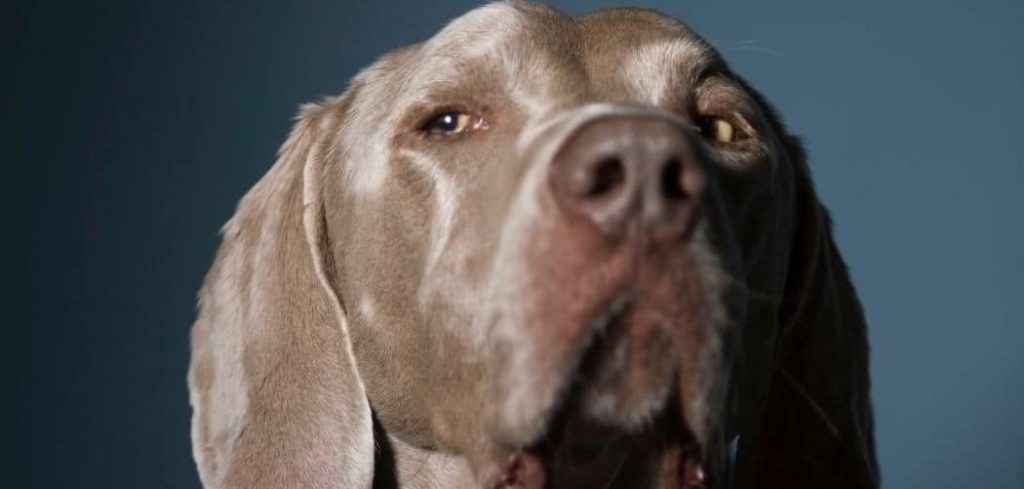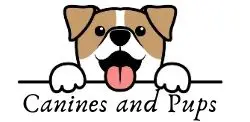If your dog is drooling and licking excessively, it may appear harmless at first—but when these behaviors become frequent or out of the ordinary, they can indicate something more serious.
We outline the causes of dog drooling and licking excessively, what they might mean for your dog’s health, and when you should seek help from a veterinarian.
Table of Contents
Here’s Why Dog Drooling and Licking Excessively Happens
When a dog is drooling and licking excessively, it often signals discomfort or an underlying issue. This behavior can result from dental problems like gum disease or tooth pain, which cause increased saliva production and pawing or licking around the mouth to soothe irritation. It may also indicate nausea or gastrointestinal upset, where licking helps calm the stomach and drooling occurs as a physical response.
Anxiety and stress can trigger repetitive licking and drooling as self-soothing behaviors. Additionally, ingestion of foreign objects, toxins, or heatstroke can cause these symptoms and require urgent attention.
While some drooling and licking are normal, excessive or sudden changes should prompt a veterinary evaluation to identify and treat the root cause effectively.

Common Causes of Dog Drooling and Licking Excessively
Occasional licking or drooling is normal in dogs, but when these behaviors are repetitive, constant, or paired with other symptoms, they could be a sign of an underlying medical or emotional issue:
1. Dental Disease and Oral Problems
Dental issues are one of the most frequent causes of both excessive drooling and licking in dogs.
Problems like tooth decay, gum infections, broken teeth, or oral tumors can cause discomfort and lead to the overproduction of saliva. A dog may begin licking frequently in an attempt to soothe the pain or dislodge something caught in their teeth.
Signs that your dog may have oral issues include:
Bad breath
Pawing at the mouth
Difficulty eating or chewing
Visible inflammation or swelling in the gums
If your dog is drooling and licking excessively along with showing signs of discomfort around the mouth, a dental exam is essential.
Related: Dog is drooling and lethargic: What You Need to Know
2. Nausea or Gastrointestinal Upset
When a dog feels nauseous, they may begin drooling more than usual and licking objects like floors, furniture, or even the air.
This licking behavior is a self-soothing mechanism, and drooling is often a direct physical response to stomach upset.
Common causes of nausea in dogs include:
Dietary indiscretion (eating spoiled or inappropriate food)
Motion sickness
Toxin ingestion
Underlying medical conditions like pancreatitis or liver disease
You may also notice your dog eating grass, pacing, or appearing restless if nausea is the cause.
Related: Dog Drooling and Runny Nose: What You Need to Know
3. Foreign Object in the Mouth or Throat
A dog that suddenly begins licking and drooling excessively may have something stuck in their mouth or throat, such as:
A small bone
Stick fragments
Toy parts
Sharp objects
This situation can quickly escalate into a choking hazard.
If you suspect your dog has swallowed or is trying to expel a foreign object, seek veterinary attention immediately.
Look for additional signs like:
Pawing at the mouth
Gagging or coughing
Refusal to eat
Whining or signs of distress
4. Anxiety and Stress
Emotional distress is a major reason why dogs lick excessively.
Stress-related behaviors may also include drooling, especially if the dog is panting heavily or feeling nauseous due to anxiety.
Common anxiety triggers for dogs include:
Separation from their owner
Loud noises like thunderstorms or fireworks
Unfamiliar environments or people
Changes in routine
Behavioral symptoms of anxiety include:
Licking paws or lips repetitively
Hiding or pacing
Barking or whining
Shaking or trembling
If your dog’s excessive licking and drooling seem to coincide with environmental stressors, anxiety may be the culprit.
5. Ingesting Toxic Substances
Toxic ingestion is an emergency situation and can quickly lead to drooling and licking excessively, as well as vomiting, diarrhea, tremors, or seizures.
Dogs may accidentally ingest:
Human medications
Toxic plants
Household cleaners
Chocolate or xylitol (found in sugar-free products)
Insecticides or rodent poison
Ingesting irritants causes mouth burns or nausea, triggering hypersalivation and obsessive licking behaviors as the body tries to expel the toxin.
If you suspect your dog has been poisoned, contact a veterinarian or pet poison control immediately.
Related: Dog foaming at mouth and drooling: What You need to know
6. Heatstroke
Excessive panting, drooling, and licking can all be early signs of heatstroke in dogs.
Dogs do not sweat like humans and rely on panting and salivation to regulate their body temperature.
Heatstroke can be deadly if not treated quickly. Look for signs like:
Heavy drooling and thick saliva
Excessive panting
Lethargy or collapse
Vomiting or diarrhea
Bright red gums
Prevent overheating by ensuring your dog stays cool, especially during warm months or after physical activity.
7. Seizures or Neurological Conditions
In some cases, excessive drooling and licking can signal the onset of a seizure or neurological issue.
During a seizure or pre-ictal phase (the time before a seizure), a dog may display odd behaviors like licking the air, drooling uncontrollably, or staring blankly.
Neurological symptoms may include:
Uncoordinated movements
Muscle twitching
Loss of consciousness
Behavioral changes
These signs require immediate veterinary evaluation.
What to Do If Your Dog Is Drooling and Licking Excessively
If your dog is showing signs of excessive drooling and licking, it’s essential to observe their behavior closely and look for other accompanying symptoms.
Here’s what you should do:
1. Check the Mouth
Look inside your dog’s mouth for any visible wounds, objects, swelling, or signs of dental issues. Use caution, as a dog in pain may bite.
2. Assess for Toxin Exposure
Scan the environment for anything your dog might have eaten, including toxic plants, foods, or chemicals.
Bring any packaging with you to the vet.
3. Note Their Behavior
Observe when and how often the licking and drooling occur. Is it during stressful events? After meals? While outside?
4. Monitor for Other Symptoms
Watch for:
Vomiting
Diarrhea
Loss of appetite
Lethargy
Difficulty breathing
If any of these symptoms accompany the excessive licking and drooling, call your veterinarian immediately.
When to Seek Veterinary Help
You should seek prompt veterinary care if your dog:
Shows persistent drooling and licking lasting more than a few hours
Exhibits pain, discomfort, or changes in behavior
Has other symptoms such as vomiting, seizures, fever, or swelling
Has potentially ingested a foreign or toxic substance
Is a puppy, senior dog, or immunocompromised pet who may be more vulnerable
Veterinarians may run oral exams, blood tests, imaging scans, or allergy tests depending on the suspected cause.
How to Prevent Excessive Drooling and Licking in Dogs
While not all causes are preventable, you can reduce your dog’s risk by:
Maintaining regular dental checkups and brushing your dog’s teeth
Keeping toxic substances out of reach
Monitoring your dog’s environment and food intake
Providing mental stimulation and emotional enrichment to reduce anxiety
Ensuring your dog stays cool during hot weather
Key Takeaway: Dog Drooling and Licking Excessively
If your dog is drooling and licking excessively, it may be a symptom of a larger problem—from something as minor as dental irritation to as serious as poisoning or neurological disease.
Though occasional drooling or licking is normal, persistent or extreme behavior should not be ignored.
Monitor your pet, remove any potential toxins, and contact your veterinarian for a thorough evaluation.
Early detection and treatment can significantly improve your dog’s comfort and health—and give you peace of mind as a responsible pet parent.
